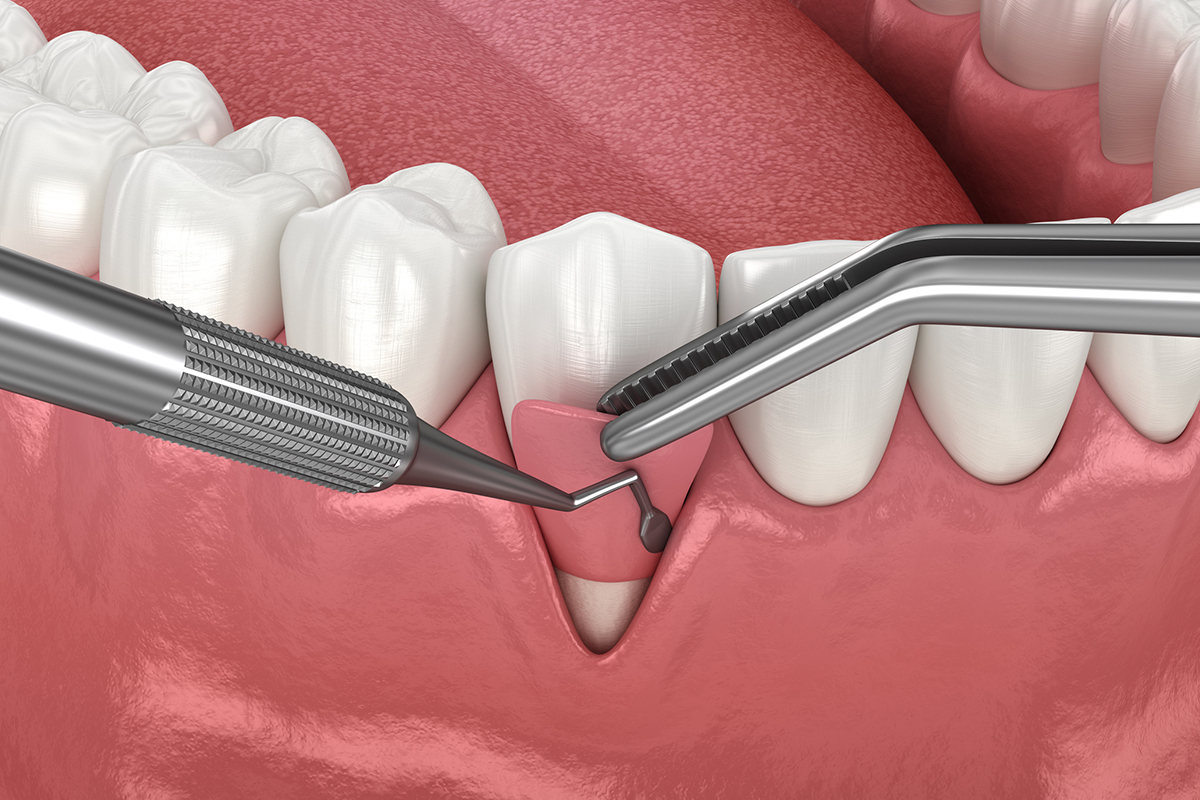Gum health plays a crucial role in maintaining your overall oral health. If you’re dealing with gum recession, gum grafting might be the solution you need to restore both function and appearance. This advanced periodontal procedure is specifically designed to address the negative effects of gum recession, which can expose your tooth roots to potential damage and increase sensitivity.
Think of gum grafting as a way to rebuild the protective barrier for your teeth while enhancing the aesthetics of your smile. But how do you know if this procedure is necessary for you? Keep reading to explore the details of gum grafting, when it’s recommended, and how it can benefit your oral health.
Understanding Gum Grafting
Gum grafting is a surgical procedure performed by a periodontist to treat gum recession. It involves taking healthy gum tissue, either from your mouth or a donor source, and placing it over the areas where gum tissue has receded. The goal is to cover exposed tooth roots and encourage the growth of new, healthy gum tissue.
This procedure is not only functional but also cosmetic. Gum recession often leads to a less appealing smile due to uneven gum lines or longer-looking teeth. With gum grafting, you can restore the balance of your gums and teeth, ensuring long-term protection while improving the aesthetics of your smile.
Signs You Might Need Gum Grafting
You may be wondering when gum grafting is necessary. Some of the key signs include:
- Exposed tooth roots: Gum recession leaves tooth roots vulnerable to decay and wear.
- Tooth sensitivity: Experiencing pain or sensitivity to cold or hot food and drinks? This might be a sign of gum recession.
- Uneven gum tissue: Noticeable changes in your gum line or teeth appearing longer than normal could indicate gum recession.
- Concerns for long-term health: Left untreated, gum recession can compromise the health of your teeth, increasing the risk of tooth loss.
If you’re experiencing any of these issues, it’s important to consult with a professional periodontist to determine whether gum grafting could be the best option for you.
What to Expect During the Procedure
Gum grafting is a routine procedure but requires expert care for optimal results. During the procedure, a small amount of tissue is taken from your mouth (commonly from the palate) or a donor source. This tissue is carefully grafted onto the affected areas to cover exposed roots and regenerate lost gum tissue.
Modern techniques often include minimally invasive approaches to ensure a quicker recovery and less discomfort. After the procedure, most patients experience a significant improvement in sensitivity and visible enhancements in the gum line.
Recovery typically takes one to two weeks, during which you’ll need to follow your periodontist’s aftercare instructions. This includes being mindful of your diet and avoiding certain physical activities to allow proper healing.
Frequently Asked Questions About Gum Grafting
What is the recovery time for gum grafting?
Recovery from gum grafting generally takes one to two weeks. During this time, it’s important to follow your periodontist’s post-operative guidelines, which may include sticking to soft foods and maintaining gentle oral hygiene practices. A full recovery, including complete integration of the graft tissue, can take up to several months.
Is gum grafting painful?
Most patients experience little to no pain during the procedure itself, as it is typically performed under a local anesthetic. After the procedure, there may be some mild discomfort or swelling, which can be managed with over-the-counter pain medications and following your periodontist’s recovery guidance.
At Schrott Perio Implants, we specialize in periodontal solutions like gum grafting to restore your oral health and enhance your smile with state-of-the-art techniques. If you’re considering gum grafting, contact us today to learn more about how we can help preserve and regenerate your gum health.

